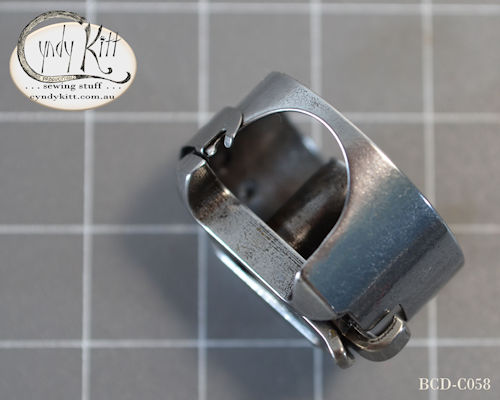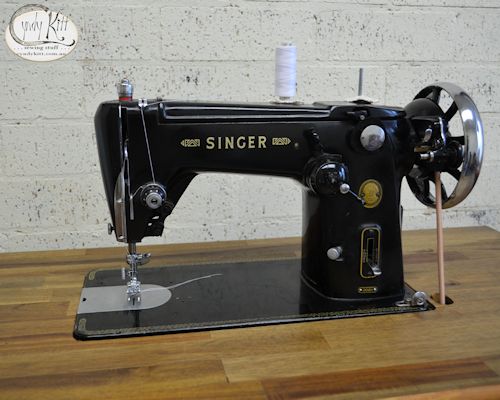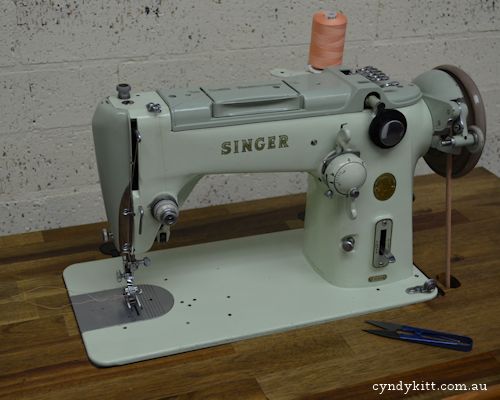The Singer 206 family of machines inspire both love and
hate with lovers of vintage machines. Though most of this class are domestic
(family use) dressmaking machines, there are several light industrial/commercial
(artisan, bespoke, alteration work etc) submodels such as the 206K10.
The light commercial submodels have a kneelift bar for the presser foot
and are mounted on industrial benches, typically powered by a clutch motor
under the bench, though they may also be treadle powered.
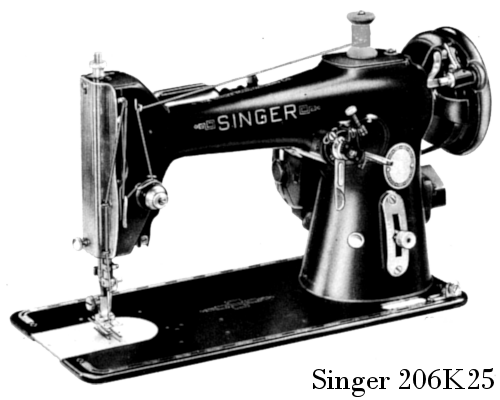
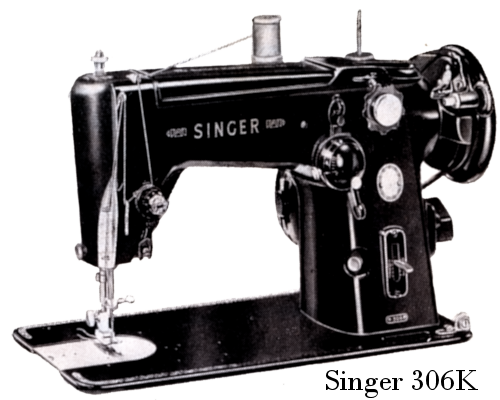
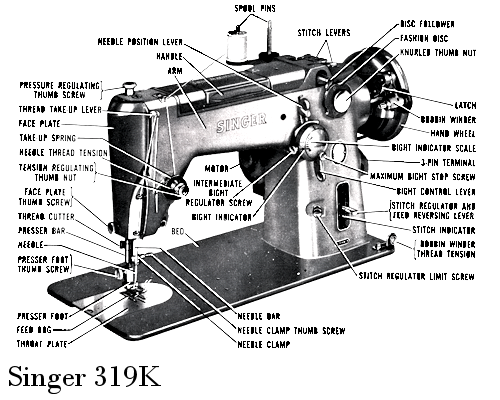

To the best of my investigations the original 206 was originally developed
by the Singer factory in Wittenberge, Prussia (Germany) in the 1920s,
as was the 201 class and the 15D88 (later to be 15-88 and 15K88).
There is very little known about the Wittenberge design team, but as the
206D, 201D and 15D88 were all in production five to ten years before they
were manufactured in the US or Great Britain, reason suggests they are
German designs.
The 206 class is a swing needle lock stitch machine with a front facing
rotary shuttle hook. I am still researching this point, but the 206 shuttle
appears to be physically identical to that used on Singer 96 class high
speed industrial machines used in the garment industry. The official case
for the 206 class is part #105032, although the #541678 case recommended
for the 20U (another swing needle lock stitch machine with a front facing
rotary shuttle hook) and #52237 will both fit the original 206 shuttle
race although using the last of these, a case meant for straight stitch
machines, may cause needle strike (I must remember to test this and confirm)
as every 206 class I have found with a #52237 case, that case has been
modified with a larger cutout.
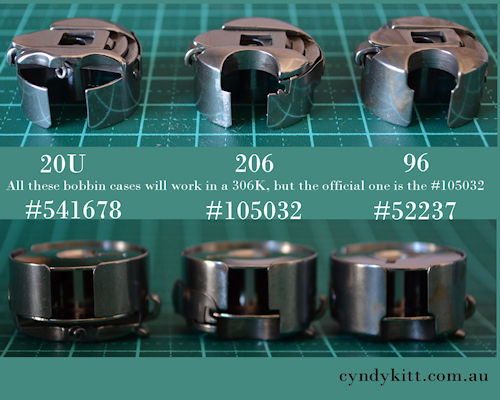
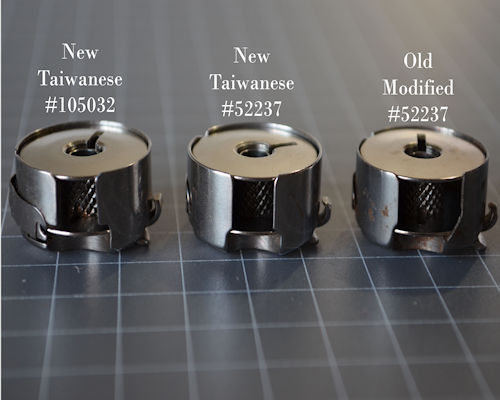
Although the original 206D and early 206K care and use manuals indicated
the machines require 15×1 (also referred to as HA×1, 705,
130 or "Universal") domestic needles, later manuals insisted
that to avoid needle strike, 206×13 class needles (a short point
version of 15×1) were required. To the best of my knowledge Schmetz
are the only needle manufacturer still producing 206×13 needles
and the range is limited to two sizes and with a few exceptions only available
online. The good news is that after much investigation and experimentation,
the reports of needle strike on the cases are only possible if the case
is improperly inserted, or possibly it occurred with an unmodified #52237
case. This means that as long as you take proper care to check a #105032
or #541678 case is seated correctly before attempting to sew, no special
needle, nor a special/modified case is required.
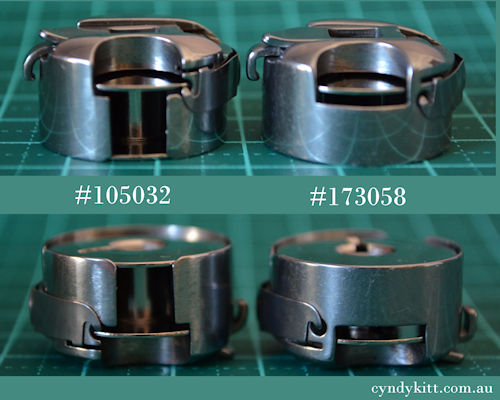
To add a little more confusion, after the development of the 306 class
Singer introduced a slight valiant on the shuttle (circa 1950s?). Typically,
black Singer 306K have the same shuttle as the 206 class, however, tan
coloured 306K and some 306 class models manufactured at other Singer factories
(such as the 306M manufactured in Italy) use this later variant. And just
how is this shuttle race different? It has a positioning dimple on the
lower right hand side, requiring a completely different case; the #173058.
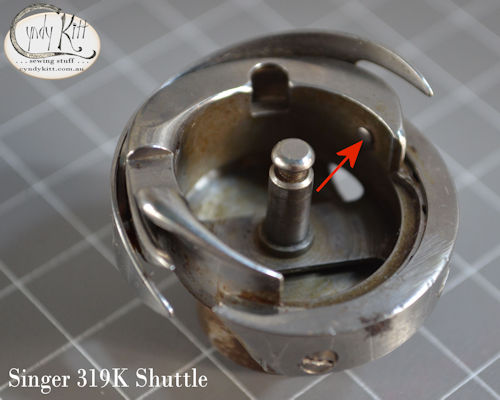
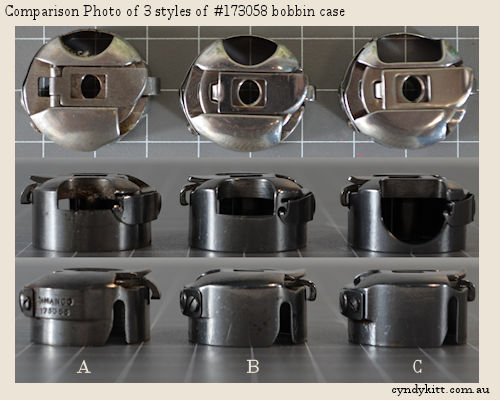
New #173058 cases
After many years of going along with the needle strike myth
(even though I couldn't seem to replicate the problem with my 306K and
319K machines) I was initially thrilled when my supplier sent me a more
open design version of the #173058 case, however a large proportion of
the stock I received started to jam in the shuttle race. It took four
years but I have finally been unable to rectify this situation with my
supplier and have stock again. You can buy with confidence as all cases
will be personally tested by me before shipping.

Regardless of the bobbin case, all 206/306/319/320 models use the #55623S
bobbin.
|
